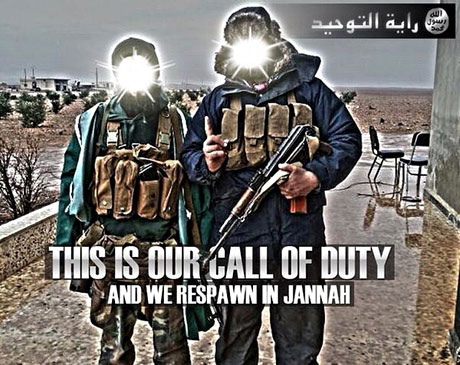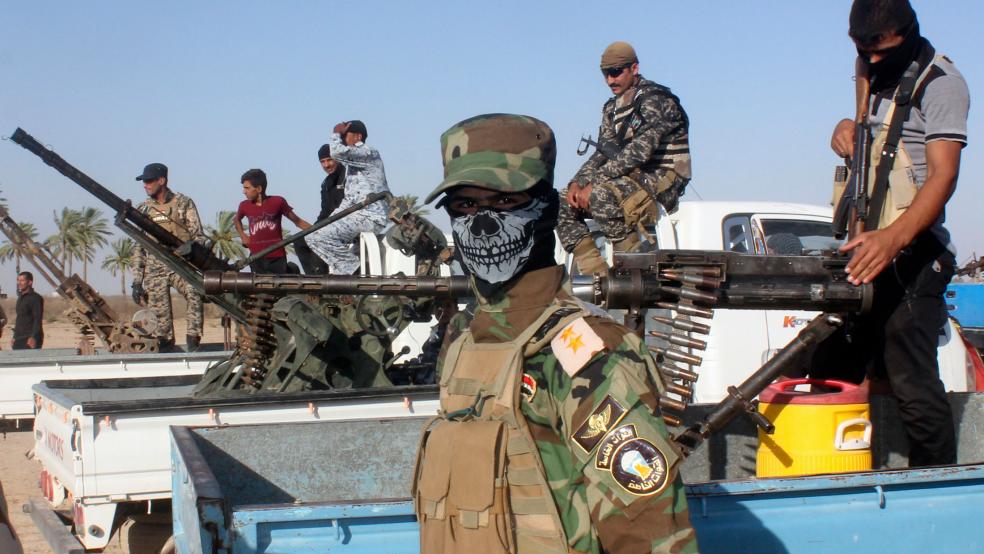The Islamic State of Iraq and Syria (ISIS) is a brutal jihadist group on par with the most ruthless branches of al-Qaeda. They are attempting to create a caliphate across the Middle East where sharia law would be callously imposed.
The quick advance of ISIS through Iraq to the outskirts of Baghdad has left Western intelligence agencies playing catch-up on the group’s motivations. This knowledge gap has hampered the White House in forming a response to the group.
Related: The Map That Shows How to Save Iraq
“They do pose a threat,” Secretary of State John Kerry said in Baghdad last week, referring to the group. “They cannot be given safe haven anywhere.”
However, Kerry hedged when asked what it would take to get the U.S. military involved in the fight. Instead, he called on Iraqi Sunnis (most ISIS members are part of this group), Shiites and Kurds to come together to fight ISIS and form a new government.
“That’s why, again, I reiterate the president will not be hampered if he deems it necessary if the formation is not complete,” Kerry said.
While there is much mystery around ISIS, a review of open-source intelligence assessment and the group’s propaganda and public statements allows a more complete picture of ISIS to be formed. ISIS appears to be less motivated by hatred for the west than Sunni tribalism. If the group is allowed to hold northwest Iraq and eastern Syria, it could create a new ISIS controlled country that would be a safe-haven for terrorists. Like Afghanistan prior to September 2001, terrorists from around the world would be free to train and plot there.
Related: How the Collapse of Iraq Would Affect America
“Several leading representatives of the U.S. intelligence community have stated that [ISIS] maintains training camps in Iraq and Syria, has the intent to attack the United States and is reportedly recruiting and training individuals to do so,” according to a June 24th Congressional Research Service assessment.
“In July 2012, ISIL leader Abu Bakr al Baghdadi warned U.S. leaders that ‘the mujahidin have set out to chase the affiliates of your armies that have fled.... You will see them in your own country, God willing. The war with you has just begun,’” CRS added.
Al-Qaeda Misconceptions
One common misconception is that the group is actually a formal affiliate of al-Qaeda. It’s not; only four groups - Al-Shabaab, Al-Qaeda in the Arabian Peninsula, Al-Qaeda in the Islamic Maghreb and the Al-Nusra Front - have been granted formal affiliations by al-Qaeda chief Ayman al-Zawahiri.
Related: Iraq: We Broke It, But We Can’t Fix It
Al-Qaeda elements and ideology influence the group, just as al-Qaeda influences groups like Boko Haram in Nigeria. There are likely ISIS members who have trained with al-Qaeda groups, but ISIS is not a formal part of the al-Qaeda command structure. ISIS is comprised of Islamic extremists; it’s just not formally recognized as part of al-Qaeda’s global jihad.
Al Baghdadi, the group’s leader, tried to change this is April 2013. According to CRS, he attempted to merge the group with Al-Nusra. The al-Qaeda affiliate rejected the deal, and the two groups are now openly fighting in Syria (yesterday evening, unconfirmed reports indicate that some members of Al- Nusra have joined ISIS).
Instead, ISIS appears to be more motivated by Sunni tribalism. As Iraqi Prime Minister, Nouri al-Maliki - a Shiite - consolidated power under his office, alienating Sunnis, a majority in Iraq. This fueled the quick growth of ISIS in Iraq and the quick pace that it advanced toward Baghdad.
“The group describes Iraqi Shiites derogatorily as ‘rejectionists’ and ‘polytheists and paints the Iraqi government of Nouri al Maliki as a puppet of Iran,” CRS found. Additionally, ISIS members “view themselves as a state and a sovereign political entity” trying to win back power in Iraq.
The anti-Shiite message has resonated with many Iraqi Sunnis. This has allowed ISIS to grow its ranks to roughly 7,000 fighters, including foreign fighters from some 50 countries who “have travelled to Syria, including Al-Qaeda-linked veterans of previous conflicts and Western nationals,” CRS found.
They also appeared to be well funded. According to reports, the group might have collected more than $400 million as the pushed across northern Iraq.
Potent Propaganda
ISIS also has a potent propaganda component. They have a broad social media presence on which they circulate western-style memes like the two below, calling on Muslims to answer the call of jihad. According to reports, the group even has a Facebook page (I was unable to locate it).


Perhaps their most impressive method of propaganda is sophisticated recruitment videos. Its latest, the Clanging of the Swords IV, is unsparing in its depictions of ISIS brutality.
Typical al-Qaeda recruitment videos contain long monologues of clerics calling Muslims to arms, with intercuts of training techniques that appear comical and out of date. ISIS is different; the Clanging of the Swords appears to begin with a shot of Fallujah, a city captured by the group in January, shot from a drone.
What follows that opening shot is shocking in its unapologetic ruthlessness. ISIS fighters spray a vehicle with a machine gun. A scene of an exploding IED hurling a man into the air is repeated. There are shots of snipers shooting their victims and watching them die. Others are shot in the back of the head (the video is easy to find online, but I’m not going to link to it. If you do decide to watch, beware - it’s obviously extremely graphic).
The group even got in on the World Cup trend. To coincide with the start of the tournament, an ISIS fighter posted a picture of a severed head to Twitter with this message (this links to a page where the severed head is blurred out. The original is easy to find online).
“This is our ball…it is made of skin #WorldCup #WorldCup2014,” the tweet read.
Top Reads from The Fiscal Times:
- Why Vietnam Will Be the Next Nuclear State
- Japan’s Pivot Away from the West Leads Back to China
- Obama’s Former Syria Ambassador Slams U.S. Policy





